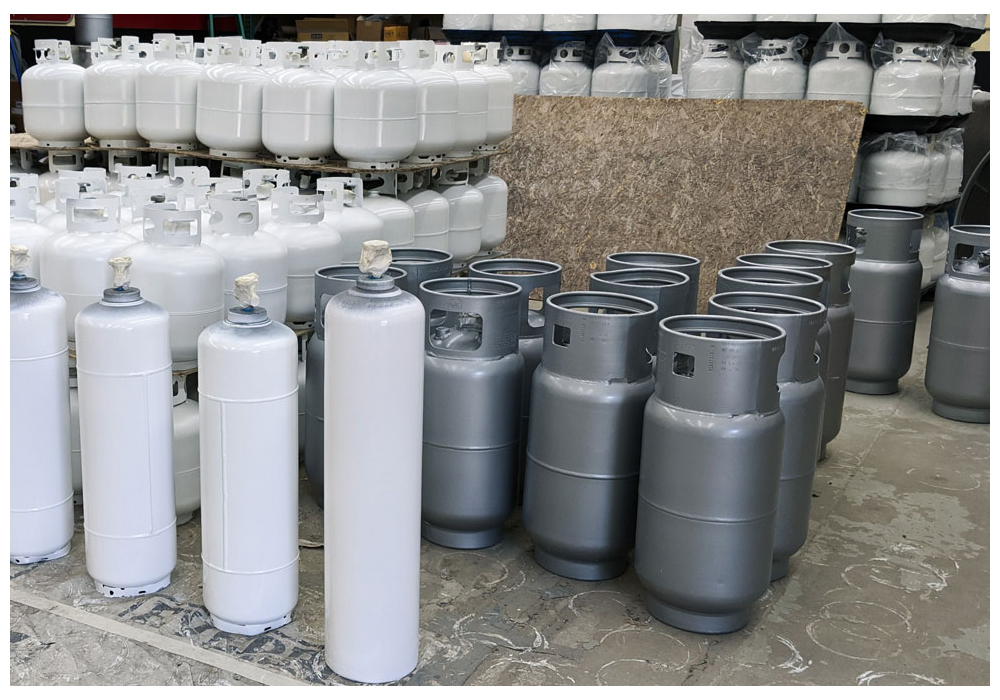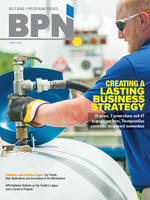
With global trends moving toward reuse and recycling, the demand for environmentally friendly propane cylinder remediation and disposal services are on the rise. A wide variety of packaged gas applications, including fuel gas, such as propane and butane, generate residual or surplus gas and cylinder material waste streams that must be managed and remediated. This can include dangerous and hazardous materials, hazardous waste as well as recyclable items.
There is a broad spectrum of packaged gas waste generators across various end-user types and gas suppliers. These operations include small and large private corporations, educational institutions, research facilities, health-care providers and government agencies. Proper fuel gas cylinder fleet management considers the entire life cycle of the gas container and is a critical function of fuel gas suppliers and end users.
Fuel gas fleet management includes regular cylinder maintenance, cleaning, refurbishing, gas service changes and requalification per Department of Transportation (DOT) requirements. Just as importantly, at the end of a cylinder’s useful life it needs to be handled in a manner consistent with best practices.
This includes recycling and disposal of used fuel gas cylinders in a safe, efficient and environmentally friendly fashion. In addition to cost and safety, there are important regulatory considerations to make when recycling fuel gas cylinders, so proper handling is critical. Requalification of fuel gas cylinders is an essential step in the cylinder fleet management process.
For example, the requalification of DOT type 4B, 4BA, 4BW, 4B-240ET and 4E rated cylinders must meet specific requirements according to 49 CFR 180.209(e), (f), (g) and (j). This includes a visual inspection done in accordance with Compressed Gas Association Pamphlet C-6 or C-6.3. The process may also include a minimum pressure test that is two times the service pressure with certain exceptions. Certain markings must be applied to the cylinders by a certified DOT requalification facility during the process.
When performing an external visual inspection in place of a periodic hydrostatic pressure test (for noncorrosive gases, such as propane) one is required to stamp an E after the requalification date. Requalification periods are five, 10 or 12 years depending on certain factors and the method used. Fuel gas cylinders, including propane, butane, propylene and acetylene, are hazardous. They pose several safety and environmental risks, including risk of explosion, fire, crush hazards and suffocation, among others.
Along with these risks comes potential legal liabilities, which must be addressed when disposing of cylinders. Cylinders with unknown contents pose a particularly high risk and should only be handled by qualified personnel with extensive training using the latest field technology and methods (at times the contents of a fuel gas cylinder are unknown from misuse). Sometimes specialized equipment is needed for handling misused gas cylinders.
This can especially be the case for situations involving cylinders with inoperable valves. Sometimes field work must be completed before a fuel gas cylinder can be safely transported to a final remediation facility. Transportation and logistical considerations can be a major factor with cylinder fleet remediation. Full-service remediation companies will typically offer transportation options, including everything from pickup to final disposal. Before cylinders can be transported, they must be made safe for handling.
Cylinder valve combinations typically contain various metals, including aluminum, steel and brass. Asbestos and other materials may also be present in addition to the gas contents of the cylinder. At a minimum, a cylinder must be depressurized via venting before it can be recycled. Depending on the contents, more extensive measures may be required.
Fuel gas cylinder contents can differ, posing various levels of flammability and explosion risk. Acetylene is commonly used for welding and cutting and is often used in conjunction with high pressure gases, such as oxygen. The welding process that uses acetylene is known as oxyfuel welding/cutting. Acetylene is highly flammable and can be volatile if not handled correctly.
 At times, refrigerant cylinders can be mistaken for fuel gas cylinders as their appearance and construction are very similar. Refrigerants pose environmental hazards, including contamination and ozone depletion. Refrigerant recovery tanks used for servicing air conditioning systems often contain multiple types of refrigerants.
At times, refrigerant cylinders can be mistaken for fuel gas cylinders as their appearance and construction are very similar. Refrigerants pose environmental hazards, including contamination and ozone depletion. Refrigerant recovery tanks used for servicing air conditioning systems often contain multiple types of refrigerants.
Refrigerants must be incinerated or recaptured and separated for reuse in order to prevent environmental damage and to comply with government regulations. This is a very different process from the handling of fuel gas cylinders, so it is important that the two are not confused and are handled by a qualified remediation company. Fuel gas cylinder contents can also be contaminated with non-gas substances, such as water or petroleum products. These contents must be dealt with separately from any compressed or liquefied gases present.
Most fuel gas cylinders can be safely recycled in a cost-effective manner. Ideally, reuse of metals or the entire cylinder and valve can be achieved to avoid landfills. The process of reuse or disposal often includes de-valving, rendering the cylinder useless, removal of markings, recycling of metals and traceable certification. Or reuse and repurposing of the cylinder itself can be achieved if it can be requalified for field use per DOT regulations. Sometimes this involves testing, visual inspection, gas service changes, cylinder cleaning and decontamination, which must be provided by a federal DOT authorized facility.
Fuel gas cylinder recycling and remediation is funded in different ways. If the owner of the cylinder wishes to reuse cylinders that meet requalification requirements, the owner typically pays for the refurbishment and recertification of the cylinder. This is less costly then purchasing new cylinders, offering the owner savings. If used cylinders are part of a site remediation project, government funding may play a role in the disposal and/or recycling of the cylinders.
Depending on the cylinder type, the used cylinder core may also be purchased by a reclamation company if it has residual value. It is important to use a waste processing company that provides certification of how a cylinder is recycled and/or disposed of. This certification should be traceable giving customers confidence that cylinders are handled properly.
Cylinder remediation projects range in size. They may be as small as a single cylinder or as large as a multi-location, multiphase fleet decommissioning of various cylinder types and sizes. The impetus behind remediation can be aging of cylinders, cylinder damage, end of project, normal wear and tear and more. Remediation projects sometimes require multiple companies working in tandem to coordinate.
One or more companies will usually provide services including project management, gas recapture, cylinder gas service changes and requalification, landfilling, metals recycling, front-end sorting, loading and transportation.


